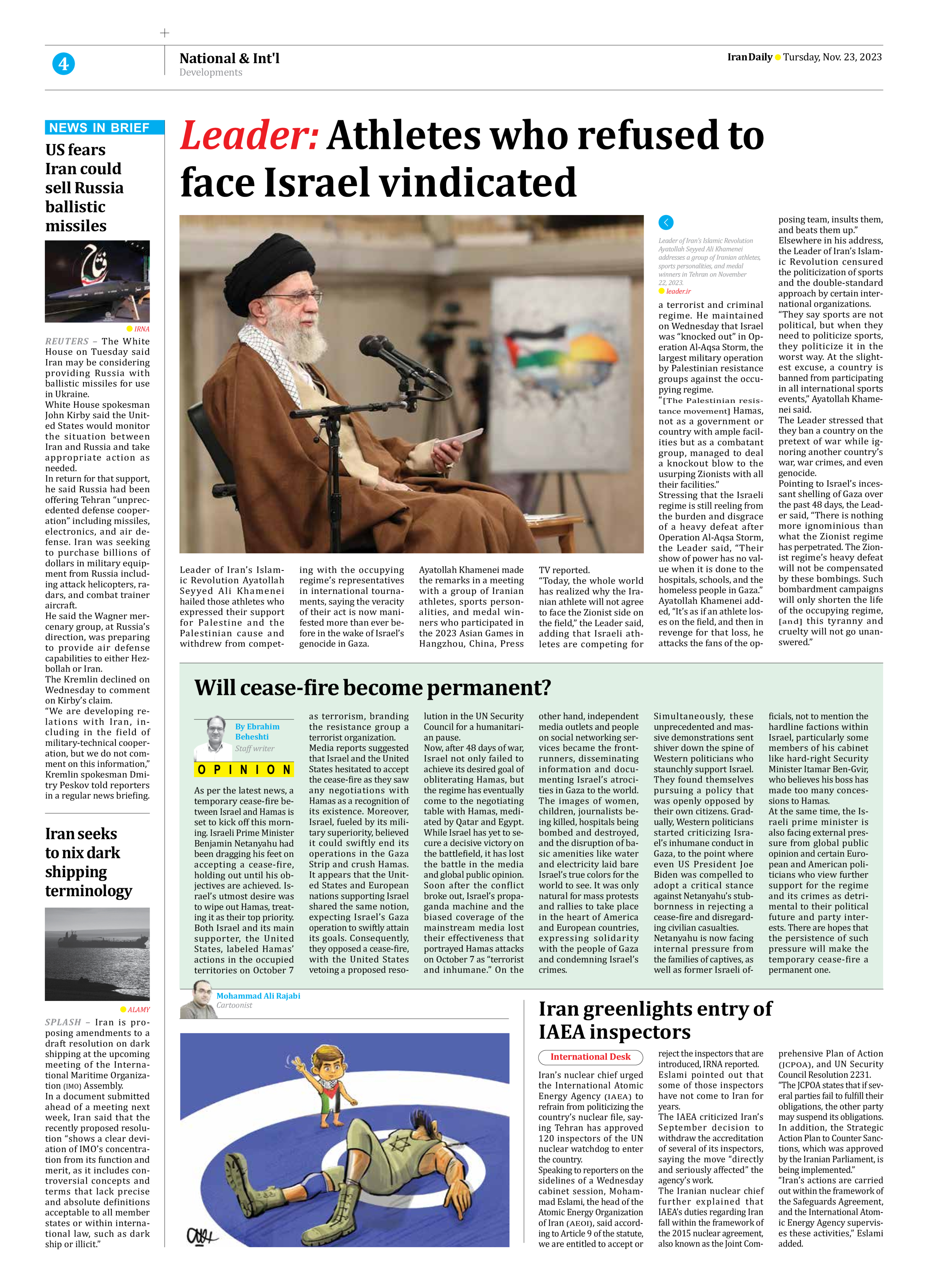
Will cease-fire become permanent?
By Ebrahim Beheshti
Staff writer
As per the latest news, a temporary cease-fire between Israel and Hamas is set to kick off this morning. Israeli Prime Minister Benjamin Netanyahu had been dragging his feet on accepting a cease-fire, holding out until his objectives are achieved. Israel’s utmost desire was to wipe out Hamas, treating it as their top priority. Both Israel and its main supporter, the United States, labeled Hamas’ actions in the occupied territories on October 7 as terrorism, branding the resistance group a terrorist organization.
Media reports suggested that Israel and the United States hesitated to accept the cease-fire as they saw any negotiations with Hamas as a recognition of its existence. Moreover, Israel, fueled by its military superiority, believed it could swiftly end its operations in the Gaza Strip and crush Hamas. It appears that the United States and European nations supporting Israel shared the same notion, expecting Israel’s Gaza operation to swiftly attain its goals. Consequently, they opposed a cease-fire, with the United States vetoing a proposed resolution in the UN Security Council for a humanitarian pause.
Now, after 48 days of war, Israel not only failed to achieve its desired goal of obliterating Hamas, but the regime has eventually come to the negotiating table with Hamas, mediated by Qatar and Egypt. While Israel has yet to secure a decisive victory on the battlefield, it has lost the battle in the media and global public opinion.
Soon after the conflict broke out, Israel’s propaganda machine and the biased coverage of the mainstream media lost their effectiveness that portrayed Hamas attacks on October 7 as “terrorist and inhumane.” On the other hand, independent media outlets and people on social networking services became the frontrunners, disseminating information and documenting Israel’s atrocities in Gaza to the world. The images of women, children, journalists being killed, hospitals being bombed and destroyed, and the disruption of basic amenities like water and electricity laid bare Israel’s true colors for the world to see. It was only natural for mass protests and rallies to take place in the heart of America and European countries, expressing solidarity with the people of Gaza and condemning Israel’s crimes.
Simultaneously, these unprecedented and massive demonstrations sent shiver down the spine of Western politicians who staunchly support Israel. They found themselves pursuing a policy that was openly opposed by their own citizens. Gradually, Western politicians started criticizing Israel’s inhumane conduct in Gaza, to the point where even US President Joe Biden was compelled to adopt a critical stance against Netanyahu’s stubbornness in rejecting a cease-fire and disregarding civilian casualties.
Netanyahu is now facing internal pressure from the families of captives, as well as former Israeli officials, not to mention the hardline factions within Israel, particularly some members of his cabinet like hard-right Security Minister Itamar Ben-Gvir, who believes his boss has made too many concessions to Hamas.
At the same time, the Israeli prime minister is also facing external pressure from global public opinion and certain European and American politicians who view further support for the regime and its crimes as detrimental to their political future and party interests. There are hopes that the persistence of such pressure will make the temporary cease-fire a permanent one.







